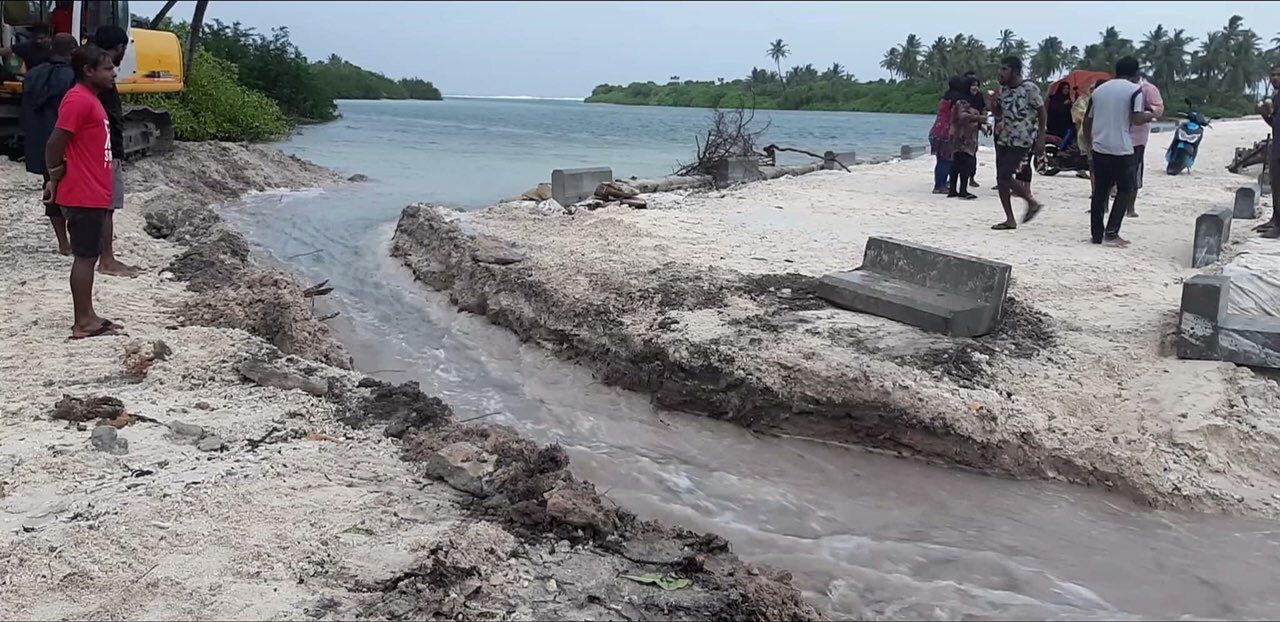Causeway worsened flooding as warned by environment impact report
Hoadehdhoo islanders dug out the causeway after swell surges flooded the island.

06 Oct 2018, 9:00 AM
Flooding on two southern islands last week was predicted by an environment impact assessment for a causeway proposed to connect the Hoadehdhoo and Madaveli islands.
Hoadehdhoo islanders dug out a section from the 440-meter causeway after swell surges flooded the island over the previous week. The MVR29 million (US$1.8 million) project was inaugurated by President Abdulla Yameen during a campaign trip in August.
The destruction of the causeway to unblock water flow between the islands was condemned by ruling party lawmakers. It was politically-motivated and unlawful damage to a state project, MP Ahmed Nihan told the press.
But the opposition-majority council said islanders were forced to act when waves rose over the causeway and seeped ashore. The authorities failed to respond to calls, according to councillors.
Become a member
Get full access to our archive and personalise your experience.
Already a member?
Discussion
No comments yet. Be the first to share your thoughts!
No comments yet. Be the first to join the conversation!
Join the Conversation
Sign in to share your thoughts under an alias and take part in the discussion. Independent journalism thrives on open, respectful debate — your voice matters.




